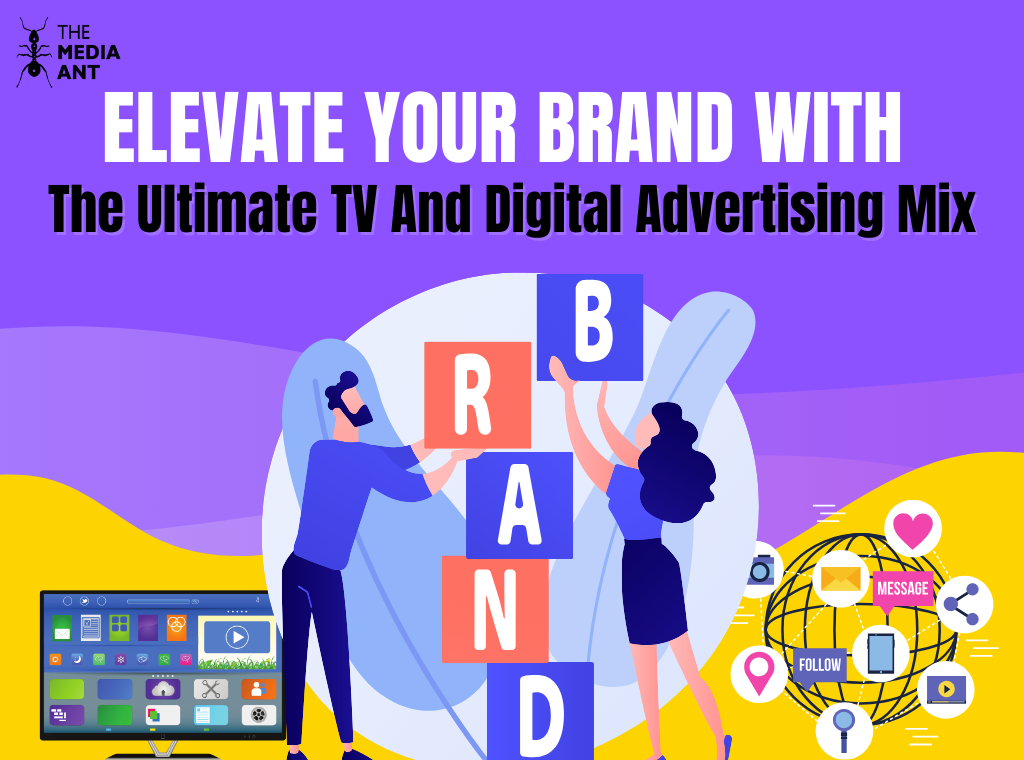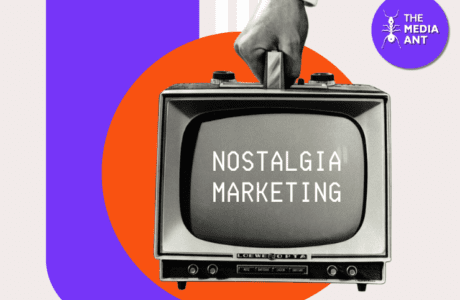Well as the common misconception goes that you have to choose between either love or career, the same goes for either TV or Digital, but who said you can only choose one, I have seen people thriving in their relationships and careers, and in the same way I have witnessed brands thriving more than ever by utilizing a multi-channel approach to maximize ROI. Imagine the power of TV’s captivating visuals seamlessly merging with the precision of digital targeting. It’s not just a strategy; it’s a fusion of storytelling and data-driven precision. Brace yourself for an exhilarating ride as we unravel the art of Screen Fusion—where TV meets digital, and your brand takes center stage in the spotlight of marketing brilliance.
What’s the Difference Between TV and Digital?
TV advertising and digital advertising are delivered on different mediums and offer different benefits. Consider the below.
Content Format
TV: TV content is traditionally broadcast in scheduled time slots. It includes live broadcasts, pre-recorded shows, and commercials.
Digital: Digital content can be on-demand, allowing users to access it at any time. It includes streaming services, online videos, social media content, and more.
Interactivity
TV: Traditional TV is a passive medium where viewers have limited control over the content. Interaction is mainly through changing channels or adjusting volume.
Digital: Digital platforms often offer interactive features, such as the ability to like, comment, share, or customize content. Some platforms also provide personalized recommendations based on user behavior.
Advertising Models
TV: TV advertising typically relies on commercials broadcast during scheduled breaks. Advertisers pay for specific time slots based on the anticipated viewership.
Digital: Digital advertising includes various models, such as pay-per-click, display ads, sponsored content, and more. Advertisers can target specific demographics, track performance, and adjust campaigns in real-time.
Metrics and Analytics
TV: TV advertising metrics traditionally include ratings and viewership estimates, often measured by organizations like Nielsen.
Digital: Digital platforms provide detailed analytics, including user engagement, click-through rates, conversion metrics, and more. This allows advertisers to analyze campaign performance with greater precision.
Why does TV advertising still matter?
The numbers show that TV is as important and valued as ever before because of its consistency and effectiveness in delivering ROI to advertisers. Currently, in India, there are 20-22 million addressable TV households, with Connected TV being the preferred connection for 65%, including smart TVs, devices like Firestick, and Internet-enabled set-top boxes, as opposed to the 35% using linear (cable and DTH).
According to a report from Finecast, a GroupM-owned addressable TV company, television advertising is anticipated to grow significantly over the next five years, positioning India as the third-largest market by 2024. The report indicates that the adoption of Connected TV has been swiftly advancing, with a projected compound annual growth rate of 47% in connected TV advertising over the next five years. This growth is expected to impact the overall TV landscape, including the linear segment.
Among the top-tier audience segments, a considerable number are cord switchers with multiple connections, and two out of three households prefer connected TV as their primary mode of accessing television. Respondents who favor connected TV tend to have higher household incomes and exhibit premium lifestyle indicators, such as owning smart devices and memberships.
Why is Digital Advertising non-negotiable?
Digital lets you laser-target specific audiences based on demographics, interests, online behavior, and more. You find your needle in the haystack, not waste resources on the whole pile. In digital marketing, targeting various stages of the marketing funnel—TOFU, MOFU, BOFU—is more accessible compared to offline methods.
Moreover, digital advertising helps in building a positive brand image, according to terakeet, approximately 91% of consumers are more likely to buy from a brand with positive online reviews. Meanwhile, 82% confirm they’re less likely to purchase from an organization with negative reviews.
Beyond brand perception, the power of digital analytics shines. Track everything from clicks to conversions, receiving real-time feedback and data-driven insights. This wealth of information empowers you to continually optimize campaigns for maximum impact.
What happens if we mix TV and Digital?
Finding the right advertising mix is a common challenge for marketers. While many small and mid-size businesses may lean towards a fully digital approach, recent evidence suggests a more balanced strategy could be more effective.
According to a study by Effectv, a combination of TV and digital advertising proves to be highly impactful. When viewers were exposed to ads on both TV and digital platforms like YouTube and Facebook, they spent three times more time engaging with the content compared to purely digital ads. Additionally, the study revealed that this dual exposure led to twice the brand recall and a 15% higher purchase intent compared to those who only saw digital ads.
The advantages of a TV-plus-digital approach are evident, with viewers perceiving digital ads as less intrusive and annoying after exposure to TV ads. The study reported a 12% increase in brand attitude when a digital ad followed a TV ad. Effectv, equipped with reliable audience data for personalization and segmentation, offers a seamless platform for small and mid-sized businesses to make TV advertising easy and effective.
Conclusion
As we conclude our journey through the Screen Fusion Strategy, it’s clear that the synergy between TV and digital advertising creates a marketing masterpiece. The fusion of compelling storytelling on the big screen and precision targeting in the digital realm offers a dynamic approach for brand elevation. Remember, it’s not about choosing between TV or digital; it’s about leveraging the strengths of both to maximize impact.





